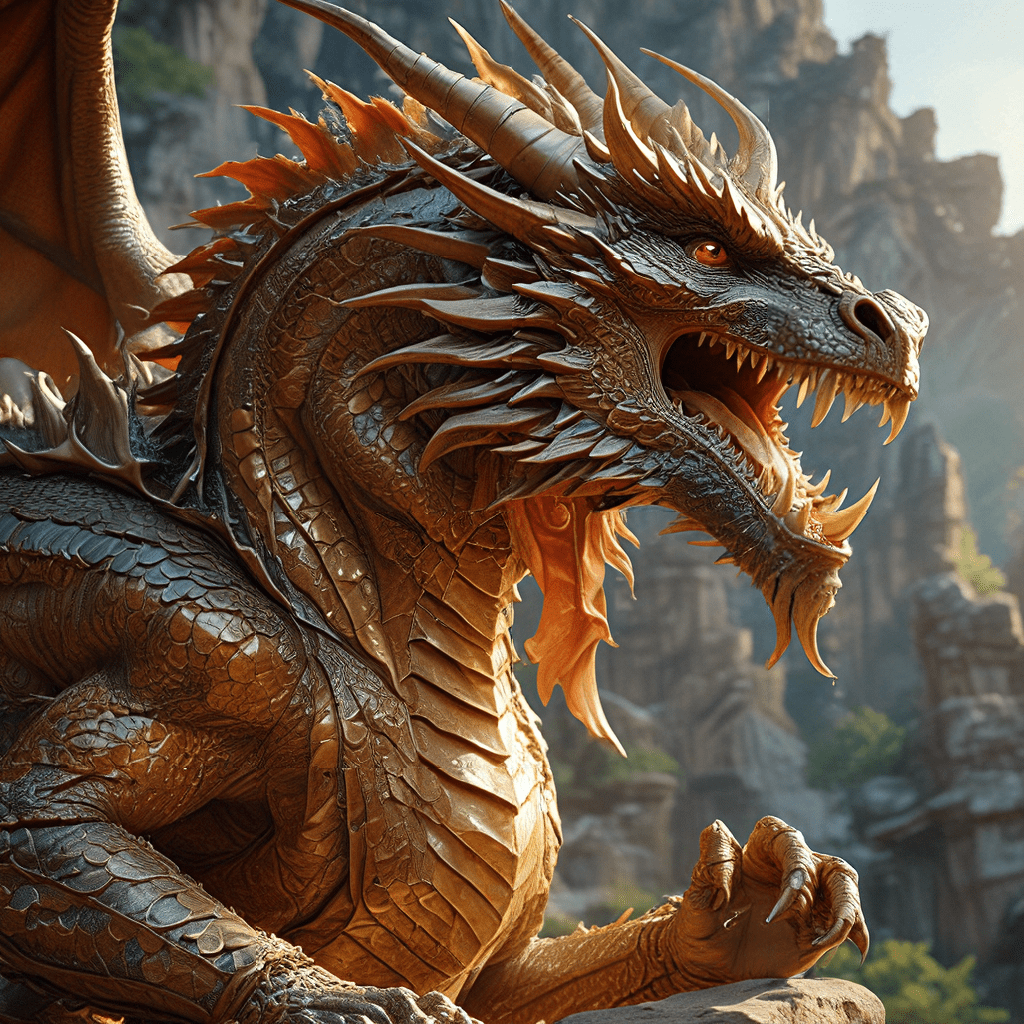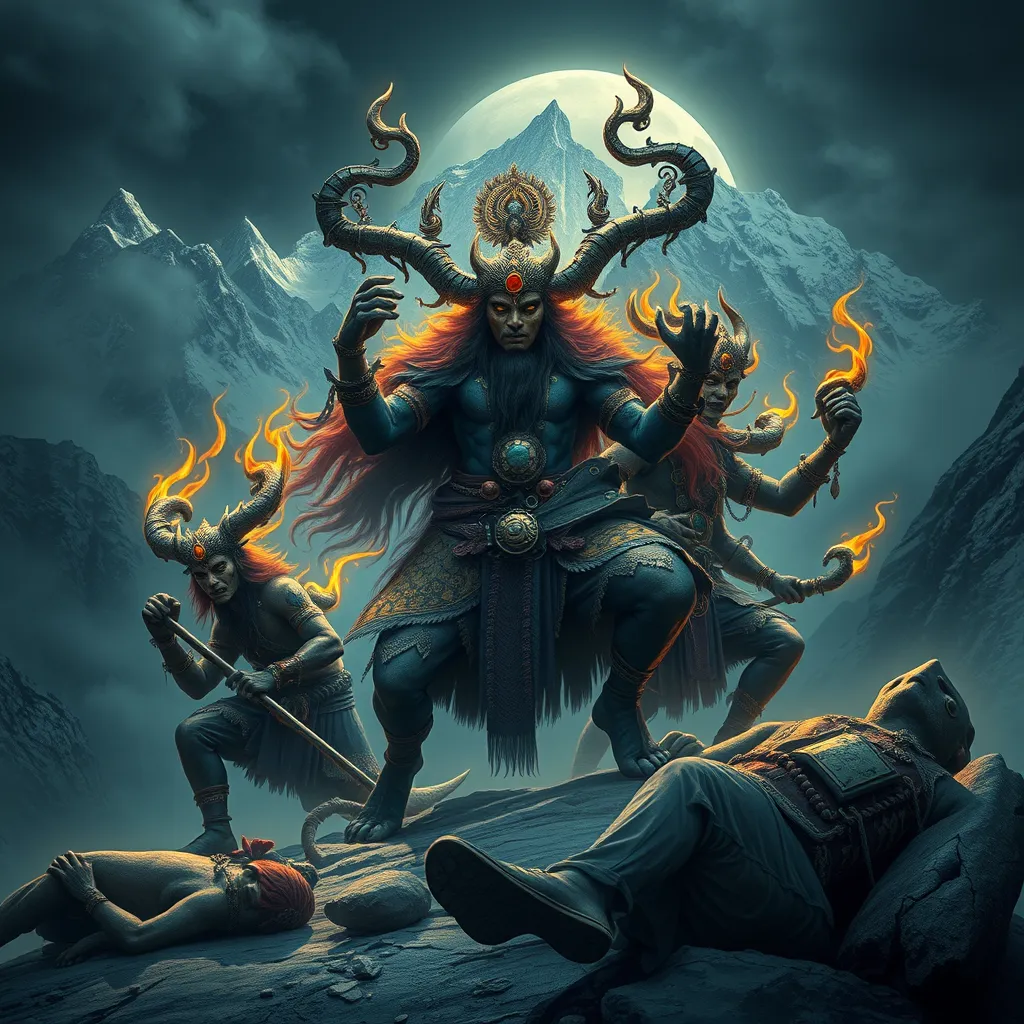The Rakshasa in Japanese Mythology: The Oni and their Ancient Ancestry
I. Introduction
The fascinating world of mythology encompasses a diverse array of supernatural beings, each with their unique characteristics and roles within their respective cultures. Among these beings are the Rakshasa from Indian mythology and the Oni from Japanese folklore. Both figures share a tumultuous history, reflecting the intricate tapestry of cultural exchange that has taken place over centuries.
Understanding the origins and cultural significance of Rakshasa and Oni provides valuable insights into how these mythological figures have evolved over time and how they continue to influence contemporary society. This article aims to explore the connections between these two entities, highlighting their characteristics, historical interactions, and modern representations.
II. The Concept of Rakshasa in Indian Mythology
Rakshasa, in Indian mythology, refers to a class of supernatural beings that are often depicted as malevolent spirits or demons. They are known for their shape-shifting abilities, cunning nature, and propensity for causing chaos. Rakshasas are often portrayed with fierce appearances, featuring sharp fangs, wild hair, and a terrifying demeanor.
In Hindu epics such as the Ramayana and Mahabharata, Rakshasas play significant roles, often serving as adversaries to the gods and heroes. They embody various themes, including the struggle between good and evil, the dangers of unchecked desire, and the consequences of moral failures.
- Characteristics of Rakshasa:
- Shape-shifting abilities
- Supernatural strength
- Malevolent intent
- Role in Hindu Epics:
- Adversaries to divine beings
- Embodiments of evil and chaos
- Symbolism:
- Representations of inner demons
- Consequences of immoral actions
III. The Oni: Japan’s Fearsome Demons
In Japanese folklore, Oni are fearsome creatures often depicted as ogres or demons. They are characterized by their red or blue skin, wild hair, and sharp claws. Oni are traditionally portrayed as malevolent beings that cause harm, yet they can also exhibit benevolent qualities in certain contexts.
The dual nature of Oni is an intriguing aspect of their mythology. While they are often seen as threats to humanity, there are stories where Oni act as protectors or bringers of fortune. This complexity adds depth to their representation in Japanese culture.
- Attributes of Oni:
- Varied appearances, often with horns and fangs
- Association with natural disasters and calamities
- Dual Nature:
- Malevolent aspects: causing destruction and chaos
- Benevolent aspects: acting as protectors in certain tales
- Depictions in Art:
- Traditional ukiyo-e prints
- Modern anime and video games
IV. Historical Connections Between Rakshasa and Oni
The historical connections between Rakshasa and Oni can be traced back to the cultural exchanges that occurred between India and Japan over centuries. As trade routes expanded and cultural interactions intensified, mythological concepts were shared and adapted between these two civilizations.
Both figures represent the fears and moral lessons of their respective cultures. The migration of these concepts has resulted in linguistic and thematic similarities, with both Rakshasa and Oni embodying the struggle between good and evil.
- Cultural Exchange:
- Trade routes facilitated the flow of ideas
- Religious and philosophical exchanges influenced mythology
- Linguistic Similarities:
- Shared etymological roots in ancient languages
- Common themes of duality and moral conflict
V. Evolution of the Oni in Japanese Culture
Over time, the Oni have evolved significantly in Japanese culture, influenced by the earlier concept of Rakshasa. This transformation is evident in various aspects of Japanese arts and festivals.
In theater, Oni have been portrayed in Noh and Kabuki performances, often embodying complex characters that challenge traditional moral boundaries. Additionally, Oni are celebrated during festivals such as Setsubun, where they are symbolically driven away to bring good fortune for the coming year.
- Adaptations in Theater:
- Noh and Kabuki performances featuring Oni characters
- Complex narratives that explore human emotions
- Festivals:
- Setsubun: rituals to chase away Oni
- Symbolism of renewal and protection
- Modern Interpretations:
- Depictions in anime and manga
- Influence in video games and pop culture
VI. Comparative Analysis: Rakshasa and Oni
When comparing Rakshasa and Oni, several similarities and differences emerge. Both figures share characteristics such as shape-shifting and supernatural strength, but their cultural significance and societal roles diverge significantly.
- Similarities:
- Shape-shifting abilities
- Association with moral struggles
- Embodiments of chaos and disorder
- Differences:
- Rakshasa: primarily viewed as malevolent beings
- Oni: can be both malevolent and benevolent
- Regional Beliefs:
- Influence of local customs on the portrayal of these figures
- Adaptation of myths to fit societal contexts
VII. The Legacy of Rakshasa and Oni in Contemporary Society
In contemporary society, both Rakshasa and Oni continue to hold significant places in popular culture and entertainment. The Oni’s presence is especially notable in Japanese festivals and traditions, where they are embraced as symbols of protection and good fortune.
Furthermore, the influence of Rakshasa can be seen in modern storytelling, where themes of inner conflict and the battle against evil remain relevant. These mythological figures serve as reminders of our collective fears and aspirations.
- Popular Culture:
- Films, anime, and video games featuring Oni
- Rakshasa-inspired characters in literature and media
- Cultural Traditions:
- Oni in Japanese festivals promoting community togetherness
- Rakshasa themes in modern storytelling reflecting moral lessons
VIII. Conclusion
In summary, the exploration of Rakshasa and Oni reveals a rich tapestry of mythological connections that span across cultures and time. Both figures serve as important symbols within their respective societies, embodying the dualities of good and evil, chaos and order.
Reflecting on their cultural significance highlights the enduring nature of mythological figures in our society, reminding us of the values, fears, and aspirations that shape human experience. As we continue to engage with these ancient tales, we recognize their relevance today and the lessons they impart.




